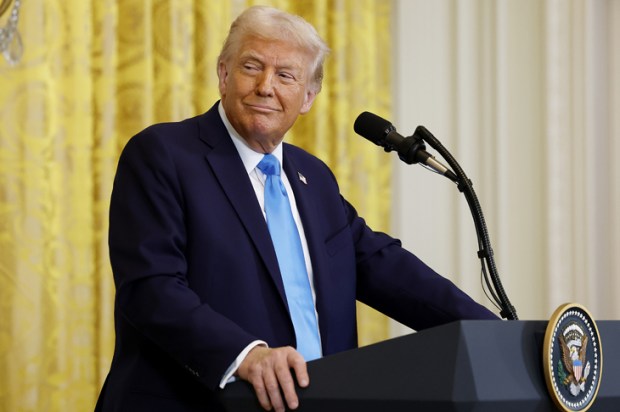New Zealand has just been through the annual bout of anguished breast-beating that marks the anniversary of the 1840 Treaty of Waitangi.
Actually, that’s not entirely correct. The breast-beating is largely confined to the ritualised political theatre that unfolds in the idyllic coastal setting of Waitangi, in the country’s far north. It was here that the Treaty was signed on 6 February 1840 by Maori chiefs in the presence of Captain William Hobson of the Royal Navy.
Invariably, government representatives at the annual Treaty commemorations are berated by Maori activists for their supposed failure to uphold the Treaty. The confrontations are always angry and sometimes violent.
Away from the acrimony at Waitangi, 6 February (a public holiday in New Zealand) is generally observed as a day of celebration. At most events the mood is laid back and the vibe is strongly bicultural.
But unsurprisingly, it’s the confrontations at Waitangi that the news media invariably focus on. This year the object of the protesters’ attention was David Seymour, leader of government coalition partner the ACT party and soon to become deputy prime minister. Seymour’s microphone was twice snatched away and rows of protesters at the front of the crowd made a show of turning their backs on him.
Seymour is in the activists’ gunsights because of his backing for legislation that seeks to clarify the so-called Principles of the Treaty, a set of quasi-judicial conventions that are routinely cited in support of Maori interests despite never having been precisely defined. Maori leaders claim Seymour’s bill is an open attack on Maori rights and have orchestrated widespread protests against it, despite Prime Minister Christopher Luxon’s assurances that the legislation won’t be passed.
It’s common ground that the Treaty is New Zealand’s founding constitutional document. One notable difference with the protests that mark Australia’s national day is that not even the most extreme Maori activists refer to 6 February as Invasion Day, since the Treaty was freely entered into by both sides. Maori chiefs were weary from decades of devastating tribal warfare and eager for the protection of the British rule of law.
Debate over the Treaty continues to rage – in fact has intensified – despite attempts by both National and Labour party governments to assuage Maori grievances. But what’s rarely questioned, still less debated, is the Treaty’s adequacy as the constitutional cornerstone for the complex, multicultural 21st century democracy that New Zealand has become.
The English-language version of the Treaty runs to a mere 572 words. It was written in haste over three days and signed on behalf of the British Crown by a man who had been in New Zealand for one week. There was a sense of urgency because the New Zealand Company was already bringing settlers to the country and the French were sniffing around in the South Island.
Several major tribes never signed the Treaty and there were serious discrepancies between the Maori and English language versions. The Maori translation – the version most chiefs signed – has raised real doubts 185 years later about whether the chiefs thought they were ceding sovereignty.
Contrast those hurried, slap-dash origins with the Australian and US constitutions, both of which were hammered out over several years and subjected to painstaking debate and ratification. Britain’s constitutional framework took even longer to evolve: several centuries, in fact.
No reasonable person could dispute that the Maori race got the worse of the Treaty. A few early white settlers became unimaginably rich by acquiring vast tracts of cheap land, denuding it of forest and turning it into highly profitable pasture. The Maori population was effectively reduced to serf status.
Maori tribes were severely disadvantaged by a British legal system that wasn’t conducive to traditional communal ownership of land. Some had their land confiscated as punishment for the New Zealand Wars and some were worn down by relentless pressure from governments eager to satisfy impatient white settler demands. Others had their land sold out from under them by unscrupulous and greedy chiefs.
The net result was that Maori were dispossessed of virtually an entire country that had once been theirs, albeit one that they frequently fought over among themselves. Crucially, the pledge that they would retain ‘full exclusive and undisturbed possession of their Lands and Estates Forests Fisheries and other properties’ was not fulfilled.
Seen in that light, Maori anger and resentment over the Treaty is understandable and justified. But the picture is complicated by 185 years of miscegenation. Maori and European have interbred to the point where the two races are inextricably bound together, with the awkward result that Maori activists fulminating against the consequences of colonialism are themselves the descendants of their supposed colonial oppressors.
Demands to ‘honour the Treaty’ resonate with many white New Zealanders as well as those of Maori descent, but the country is left with a highly problematical compromise. Recognising that many historical injustices are too deep-seated to be unpicked without risking ruinous consequences, those in power seek to make amends by imposing confected Treaty obligations that carry their own substantial economic and social costs.
In education, health, social welfare, local government, the arts, the churches, sport and even science, no policy or initiative is allowed to proceed without first being scrutinised to ensure it complies with supposed Treaty obligations – obligations the signatories could never have envisaged. These ‘obligations’ are often directly at odds with the democratic principle of equal rights regardless of race.
Demands for compliance are backed by aggressive campaigns designed to intimidate anyone who might be tempted to resist – and it works. The most aggressive of these displays come from people who are as much Pakeha (Anglo) as Maori, but who have correctly deduced that their Maori bloodlines give them far more political leverage.
Amid all the guilt and recrimination, no one pauses to ask whether too much is being asked of a 572-word document that was drawn up in haste, that not all Maori leaders signed, that is open to conflicting interpretations and that was created in circumstances incomparable with 21st century New Zealand. Has a constitutional burden been placed on the Treaty that it’s unable to bear?
Is it, to use a fashionable phrase, still fit for purpose? And if not, what alternatives might there be that recognise legitimate demands for justice and fairness without risking social and economic paralysis and the slow decline of a society once admired worldwide as an exemplar of racial harmony?
Got something to add? Join the discussion and comment below.
You might disagree with half of it, but you’ll enjoy reading all of it. Try your first month for free, then just $2 a week for the remainder of your first year.













